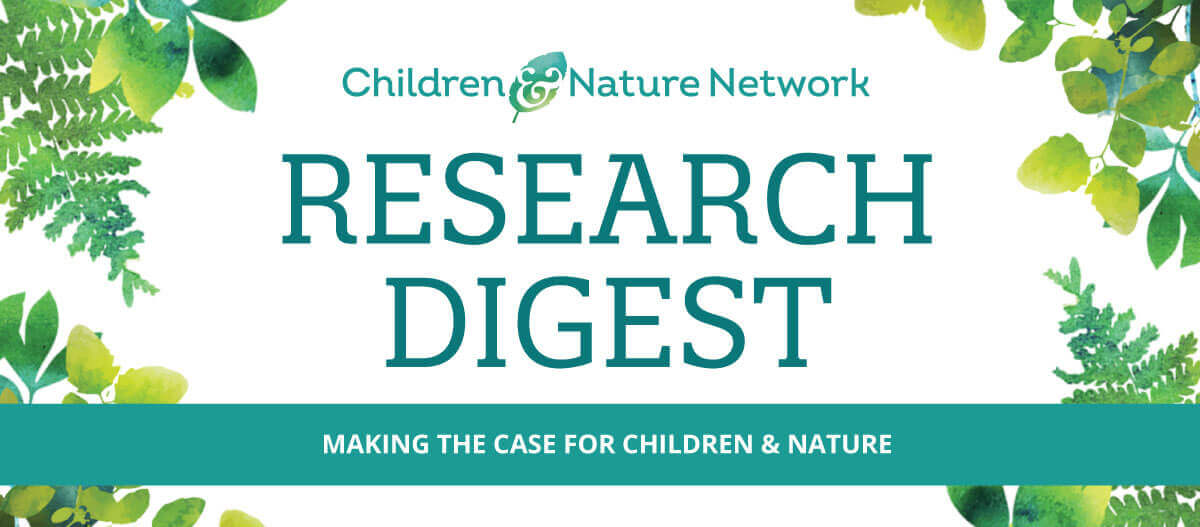Children with Autism
Autism is a neurodevelopmental condition which impacts the way the brain performs in areas of communication skills and social interaction. People with autism are sometimes described as “being on the spectrum,” or as having “autism spectrum disorder” (ASD). These terms recognize the fact that people with autism have characteristics that fall along a continuum, from relatively mild to very severe. While still small, the growing body of research on the benefits of nature for children with autism suggests that the natural environment seems to provide non-intrusive, sensory experiences which provide a welcome escape from the more intrusive and over-stimulating indoor environment. Documented benefits of nature engagement for children with ASD include improved communication, more positive social interactions, increased physical activity, gains in cognitive development, and greater emotional affect.
Heavier community tree canopy predicts lower conduct problem severity in children with autism
Information on almost 80,000 children (age 6-17), accessed from the National Survey of Children’s Health, showed that children with special health care needs or having autism had increased odds of moderate to high levels of conduct problems. Green space data, accessed through the National Land Cover Database (NLCD), linked with the child data showed that community tree canopy coverage significantly decreased the odds of conduct problems in children with autism.
Barger et al. 2021. Tree canopy coverage predicts lower conduct problem severity in children with ASD.
Access Study
Recurrent patterns observed in animals and other aspects of nature may promote the psychological development of children with autism
Nine children with autism, after participating in an intervention involving animals and other aspects of nature, showed increased ability to engage in conversation, interact socially, and use more fantasy in play. These outcomes, along with reduced stress and increased curiosity and mental energy, were associated with recurrent patterns observed in animals and other aspects of nature.
Bystrom, Grahn & Hägerhäll, 2019. Vitality from experiences in nature and contact with animals – A way to develop joint attention and social engagement in children with autism?
Access Study
Parents of children with autism identify benefits and barriers associated with spending time in nature
Information shared by three Australian parents of children with autism indicated that time in nature supports child interests and imagination, is calming for the child, and helps the child cope with change. Parents noted barriers including time constraints related to appointments, the child’s sensory challenges, balancing the needs of siblings, and dealing with the exhaustion of daily life.
Galbraith & Lancaster, 2020. Children with autism in wild nature: Exploring Australian parent perceptions using Photovoice.
Access Study
Healing gardens can promote both ecosystem services and therapeutic goals for youth with autism
Eight male youth (age 15 – 23) with ASD worked as “Biodiversity Custodians” in the development of a healing garden in Italy. The work of the Custodians proceeded from sowing seeds to plant cultivation to seed collection for the purpose of conservation of local biodiversity. Pre/post assessment results showed that the youth with ASD made significant improvements in independence, adaptive behavior, and interaction skills.
Scartazza et al. 2020. Caring local biodiversity in a healing garden: Therapeutic benefits in young subjects with autism
Access Study
Equine assisted activities and therapies may be a useful form of treatment for children with ASD
This review and meta-analysis of published trials with comparison groups investigated the effectiveness of equine assisted activities and therapies (EEAT) among children with ASD. The overwhelming majority of the studies demonstrated high effectiveness of EAAT, especially for improved social functioning. Some studies also reported a significant reduction in aggressive behaviors and improved trunk stability.
Trzmiel et al. 2019. Equine assisted activities and therapies in children with autism spectrum disorder: A systematic review and a meta-analysis.
Access Study
Sensory gardens can be therapeutic environments for children with autism as well as welcoming spaces for all ages and abilities
This field report describes how challenges for children with ASD were addressed through the design and installation of a sensory garden at The Els Center of Excellence in Florida. The garden was also designed to be a welcoming place to the larger community, including parents, educators, therapists, and caretakers. Today, the garden “provides opportunity and choice for everyone to engage with nature on their own terms, in their own way, and at their own pace.”
Wagenfeld, Sotelo & Kamp, 2019. Designing an impactful sensory garden for children and youth with autism spectrum disorder.
Access Study





